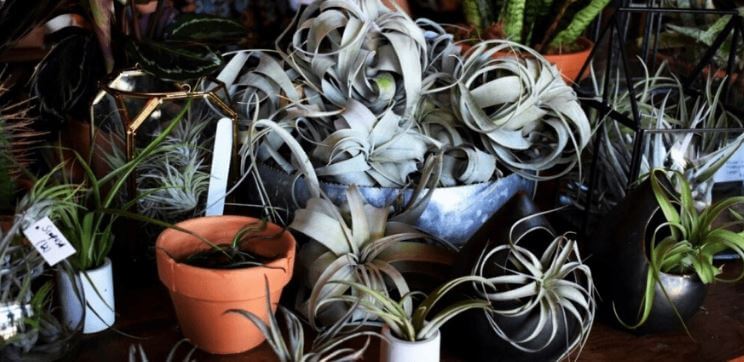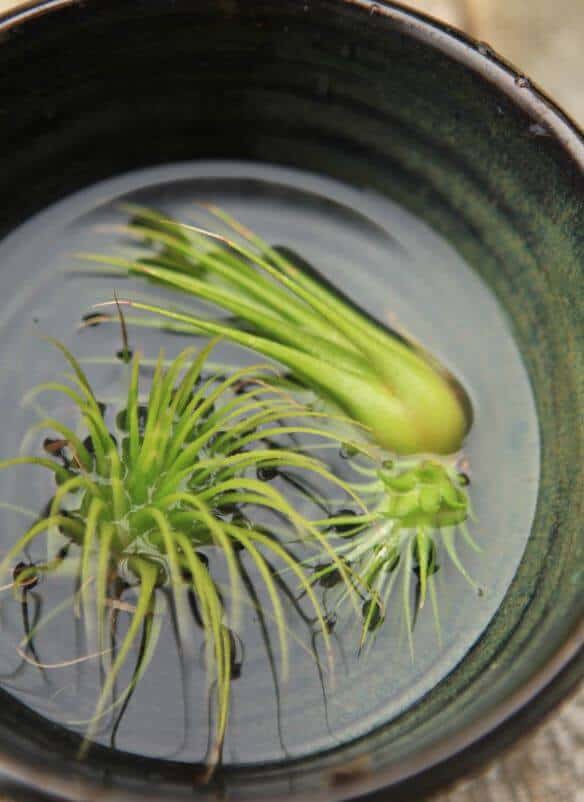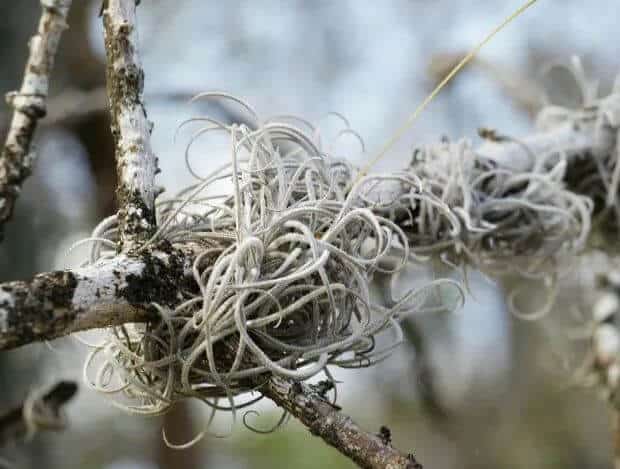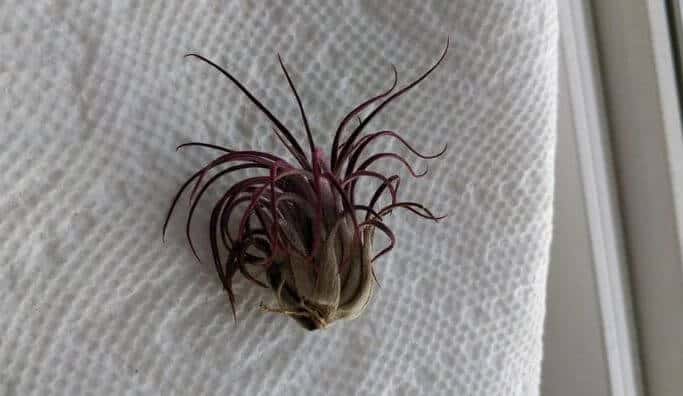Last Updated on September 9, 2023 by a Friendly Gardener
Air plants are fascinating creatures. They come in a wealth of unique shapes and don’t require a growing medium like soil. Generally found in a palette of soft greys and silver, they don’t appear in vividly green hues. And this alone can make the home gardener dubious as to if the plant is alive or dead.
The greatest cause of air plant fatalities is rotting. Because they are not cultivated in a growing medium, they do require ample water. But when water is left to stagnate at the center of these plants they will rot from the inside outward.
Another cause is underwatering and dehydration- This is a common error if a home gardener just assumes the plant will pull moisture out of the air and therefore underwaters the plant.
Tillandsia can be revived unless it disintegrates when touched.
All About Air Plants

Air plants are epiphytes. They do not grow in soil beds and hence will absorb the nutrients and moisture necessary for survival through trichomes which are small cells found in their foliage.
In their natural habitat which might be found in rainforests, deserts, or mountainous regions, these plants attach themselves to hosts. They are not however parasites because they take absolutely nothing from hosting vegetation.
There are more than 650 air plant species, and they are botanically referred to as Tillandsia which belongs to the Bromeliad or pineapple family and is the largest genus. These plants will flower only one time during their lifespan.
A Dead Air Plant and the Plant Lifespan
An Air plant will only bloom once it has reached full maturity. It is then that your Tillandsia will be able to reproduce. Once the blossom fades, small plantlets or offsets will appear at the plant’s base. These Air plant pups will eventually grow into a version of the mother plant.
As soon as your Air plant flowers, death commences. How long a bloom will last will depend on the Tillandsia species and some may last for weeks or simply for days. Adult plants can in some cases live with pups attached for months. If the mother plant begins to fade, the pups need to be separated. If you hope to keep the mother healthy longer, remove the offsets when they reach a third of the size of the mother. In this way, the mother will use the energy for herself.
If your Air plant has produced a flower and offsets and begins to fade, know that your plant is near its end of life. Nurture your plant’s pups.
The Air Plant and Dehydration

In many cases of dehydration, you can save your air plant. If you happen to forget to water, a deep soak should rectify the situation. The Tillandsia will experience a change in the appearance of its foliage if it is dehydrated. The plant’s color will begin to fade, and the leaves will begin curling. Stiffer foliage will become softer and softer foliage may become brittle. If left so, brittle leaves may then crumble when touched.
Overwatering and Air Plant Rot

Air plant species that have the form of a bulb can experience difficulties with drainage. If water collects in the plant and the airflow is insufficient for drying, either fungus or bacterium can attack the plant.
An indication that dry rot has set in is when patches of either purple or black appear at the plant’s heart.
You can try to place your plant on tissue in a spot that is warm and well-aerated. However, if this infection has established itself, your plant is dead and there is no hope of reviving it.
When you soak your air plant, make sure to shake off gently any excess water. Allow them to dry entirely before you place them in the preferred location.
Toxins, Chemicals, and Air Plants
One source of toxins that can negatively affect your air plant is tap water. City water will generally contain chemicals that make it safe for consumption. Chlorine is one such chemical and can spell the end of an air plant. Ideally, use collected rainwater or aquarium water for your plant. If you do not have any, leave your tap water out in a bowl overnight so that the chemicals can dissipate.
Other elements that can harm an air plant include boron, copper, rust, zinc, and the chemicals used in wood that are pressure-treated. Water-softening salts are also lethal.
When feeding your air plant, use a fertilizer specifically formulated for Tillandsia or Bromeliads to avoid poisoning from nitrogen usually found in considerable amounts in houseplant fertilizers.
How Do I Know if My Air Plant Is Dead? What Does a Dead Air Plant Look Like?

Dead air plants will experience changes in their appearance. Watch for these changes to determine if your Tillandsia is dead or if it can be saved.
-
Black and purple plant base
When the plant’s base turns black and purple it is probably suffering from dry rot from sitting too long in the water. Generally, air plants will not recover from this. You can try drying out your plant to see if by chance it will recover.
-
Brown leaf tips
This is an indication that your plant needs a drink. Prune off brown tips at an angle. This is important so that the plant does not waste its energy trying to heal the compromised tips. Place the plant head downward and soak it overnight. Try repeating this every 3 or 4 days until your plant recovers. Dry your Tillandsia entirely before watering again.
-
Crumbling Tillandsia
Usually the result of excessive dehydration, the plant has died. This can also be the result of excessive exposure to copper or nitrogen.
-
Curly foliage with fading color
This is an indication of dehydration. Place the plant head downward and soak it overnight. Try repeating this every 3 or 4 days until your plant recovers. Dry your Tillandsia entirely before watering again.
-
Lifespan has ended
When the plant has flowered and died and the pups have appeared, it will fade away. Once the plant has completed reproduction, its lifespan will come to a close.
Final Thoughts

Tillandsias are wonderful unique plants when afforded adequate light, air, and water. With a bit of care, their lives can last for years. If light, air, or water is insufficient or excessive, your plant’s health can be compromised.
The upside is that your Air plant will leave behind its pups for you to enjoy.

